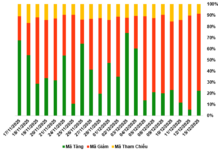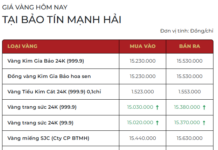Vietnam to Have an Airport Entirely on Nearshore Waters
The Master Plan for the Development of the National Airport System for the period 2021-2030, with a vision towards 2050, approved by the Prime Minister, includes the content: “Research, survey, and evaluate the potential for planning airports for some military and security purposes; some critical locations for emergency and relief, with tourism and service development potential, and other locations where airports can be constructed and operated.” One such potential location is in Van Thang commune, Van Ninh district.
The Khanh Hoa Provincial Planning for the period 2021-2030, with a vision towards 2050, approved by the Prime Minister in Decision No. 318 dated March 29, 2023, includes the content: “Study the orientation of the airport construction area associated with the development of the Van Phong Economic Zone and socio-economic development (with investment capital from outside the budget).”
The Adjustment of the Master Plan for Construction of Van Phong Economic Zone until 2040, with a vision towards 2050, states: “Planning and investing in the construction of Van Phong Airport in Van Thang commune with a land use area of about 500ha (reclaimed from the sea).”
The People’s Committee of Khanh Hoa province believes that studying and formulating the Van Phong Airport Planning Proposal is in line with the Party and Government’s policies, practical needs, and the world’s general development orientation.
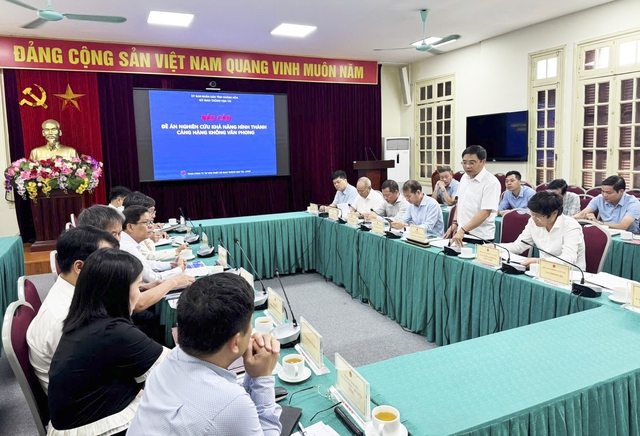
Meeting scene. Source: Khanh Hoa Newspaper.
On September 13, Minister of Transport Nguyen Van Thang chaired a meeting to hear the People’s Committee of Khanh Hoa province report on the Proposal for Researching the Feasibility of Forming Van Phong Airport.
The proposed location for the construction of Van Phong Airport is in Van Thang commune, Van Ninh district, about 65km south of Nha Trang city, 101km south of Cam Ranh International Airport, and 49km north of Tuy Hoa Airport.
The total planned land area is 497.10ha, including 412.96ha of common use land, 77.64ha of land under the management of civil aviation, and 6.50ha of land under the management of the military. Van Phong Airport is designed according to ICAO 4E standards, a military airport of level I, with a runway length of more than 3km and a capacity of about 1.5 million passengers per year. The total investment for the construction of Van Phong Airport in the first phase is estimated at VND 7,892 billion.
The planned airport area is entirely on nearshore waters, a precedent in Vietnam. Notably, this area has no population, protected forests, mangrove forests, historical sites, or anchorage planning for ships and typhoon shelters, making it convenient for compensation and site clearance. The project is expected to be implemented from 2023 to 2029.
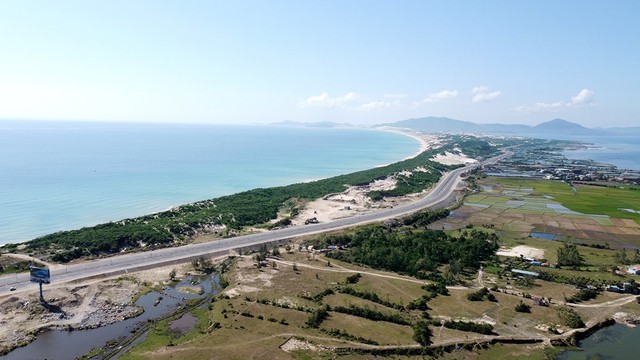
A corner of the North Van Phong area, where Van Phong Airport is proposed to be built.
After the report, Minister of Transport Nguyen Van Thang agreed on the necessity of investing in Van Phong Airport in Khanh Hoa province. The Minister requested the Department of Transport and consulting units to research and evaluate more thoroughly and carefully the economic and social effectiveness of forming Van Phong Airport; assess the demand for domestic and international passengers and cargo.
Consulting units need to review some technical factors and design solutions to calculate and propose a preliminary total investment appropriately; consider proposing investment capital sources suitable for feasibility when implementing investment.
In addition, Khanh Hoa needs to urgently invest in synchronous technical infrastructure and essential social infrastructure within the Van Phong Economic Zone to put it into operation simultaneously with the airport project. The Minister also suggested that Khanh Hoa should make it an international airport since the Van Phong area is oriented to serving international tourists.
How to Arrange Capital for the Construction of Van Phong Airport?
Previously, the Master Plan for the National Airport and Airfield Network until 2030, with a vision towards 2050, approved by the Government, did not include Van Phong Airport. However, the plan listed some potential airports, including one in Van Thang commune, Van Ninh district, Khanh Hoa province.
Regarding the capital source for the project, the province of Khanh Hoa has proposed three investment plans for Van Phong Airport under the Public-Private Partnership (PPP) mode. Plan 1: The state carries out support work for relocation. The PPP investor invests in completing the airport infrastructure construction.
Plan 2: The PPP investor invests in some critical works, including constructing a passenger terminal, aircraft parking lots, and transportation infrastructure. The state budget invests in the remaining items, including leveling the airport ground; constructing runways and taxiways; and building works to ensure flight operations.
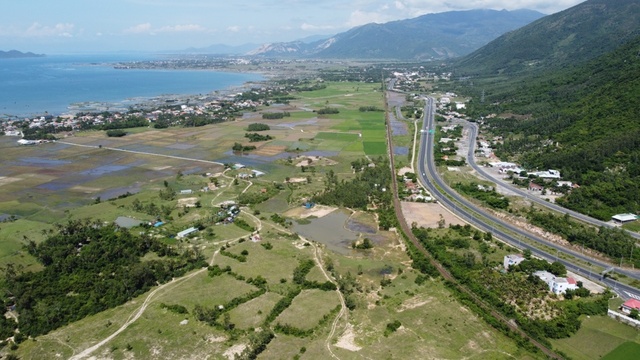
The total planned land area is 497.10ha.
Plan 3: The state budget (central and local) carries out support work for relocation; invests in works to ensure flight operations; and supports a part of the work of leveling the airport ground. The PPP investor invests in the remaining items, including leveling the civil aviation area; constructing the aviation area, civil aviation area, and connecting transportation system.
Finally, after analysis and evaluation to ensure reasonableness and feasibility, Khanh Hoa province proposed studying the implementation of Plan 3. The state budget support is proposed at about VND 2,150 billion for investment in works to ensure flight operations and support a part of the work of leveling the airport ground.
The BOT investment capital is about VND 5,742 billion, including the owner’s capital and commercial loans mobilized by the investor. The payback period is expected to be about 47 years.
Kansai International Airport (Japan) is also built entirely on the sea. However, this airport is facing subsidence. Therefore, the Ministry of Transport suggested that when consulting on the planning of Van Phong Airport, it is necessary to supplement the research on suitable technical solutions and evaluate many factors to adapt to the sea-level rise scenario in Khanh Hoa.
The Great F&B Expansion: Vietnam’s Culinary Conquests Abroad
The influx of international F&B brands into Vietnam has been a well-observed phenomenon, but the reverse journey has proven challenging for Vietnamese brands looking to conquer the global market.




